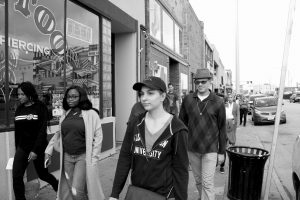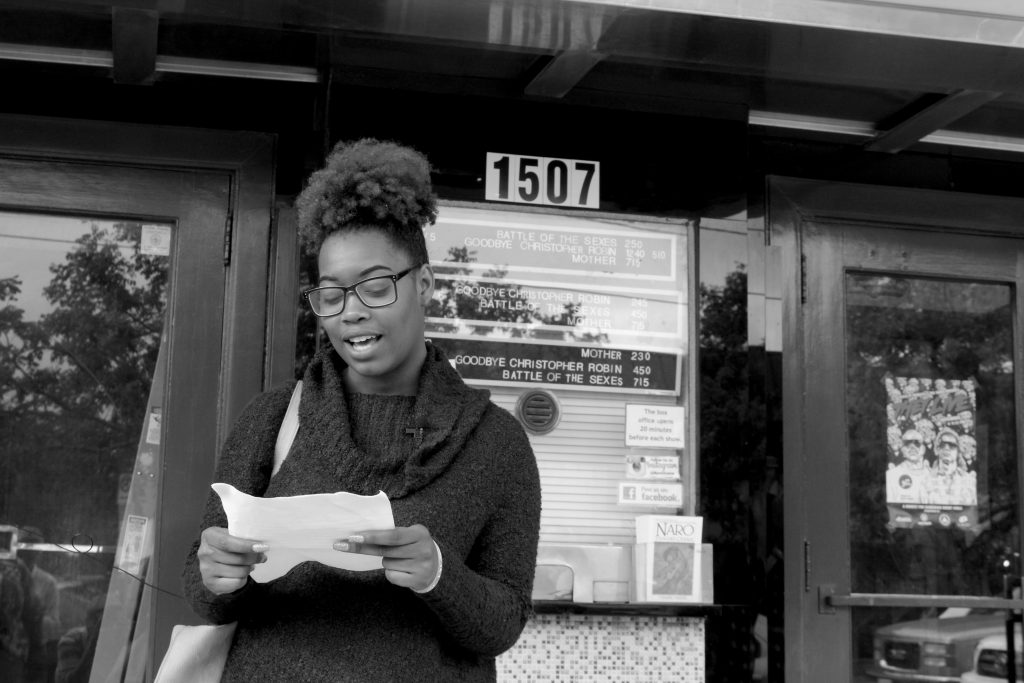
In the fall of 2017, Old Dominion University students in Cathleen Rhodes’s Queer Studies course partnered with the Tidewater Queer History Project to develop a queer walking tour of Norfolk. Though not the first LGBTQ-themed walking tour in the area, it was the first to be designed and led by students. Students started by examining Our Own, the Norfolk-based gay newspaper that ran from 1976 – 1998. ODU Perry Library’s Special Collections has the only known full print run of the paper still in existence, and students spent hours combing through old issues looking for interesting people and places from Tidewater’s queer past and identifying several interesting topics for inclusion in a walking tour. For most students, this was their first time conducting archival research.
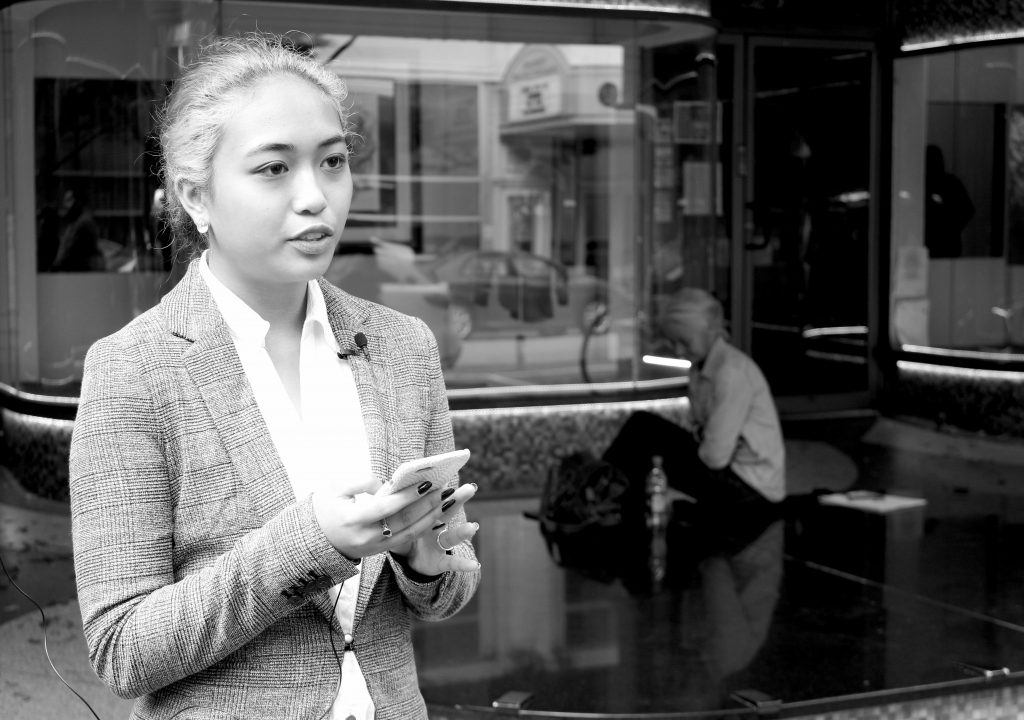
Student Caroline Ramos designed a tour route from the possible list of topics. She selected areas of the city with high concentrations of interest, mapped a route with four legs (downtown, the Neon District, Ghent, and the area surrounding ODU), and narrowed student selections to one location for each student. Students then used Our Own, The Virginian-Pilot, personal interviews, and a wide variety of other primary and secondary sources to uncover details of Norfolk’s queer past.
Courtney Rojas, marketing guru, used social media to get the word out to the community about the event. On the day of the tour, Courtney documented the process through a series of photographs and videos, updating social media for community members unable to attend the event as the class snaked through Norfolk’s streets and alleyways.
Chris served as sound engineer, micing students while the class traveled between locations and capturing their presentations in digital recordings, many of which are available on this site. The recordings bring the walking tour to participants even as they view or listen on the couch in their own living rooms. It was important to the class that information be delivered to the community in a variety of ways, and recordings captured the tour as it happened, preserving important and moving parts of the day. As the walking tour has evolved, students have also documented the tour through photographs and video. In this way, they preserve not just the past but also history in the making by creating artifacts that reflect moments of the tour itself.
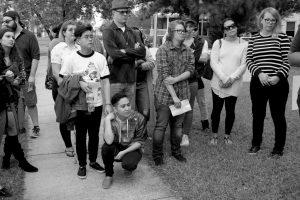
Halfway through that first tour in 2017, participants were met by a small but vocal group of anti-gay protestors waiting at the Unitarian Church of Norfolk (UCN). Protestors likely heard about the tour through social media, and they greeted students and community members attending the tour with vitriol. While some students had encountered such groups before, for some, particularly straight allies in the group, it was their first time witnessing this sort of overt homophobia in person. Students persevered, continuing with presentations at the Unitarian Church of Norfolk though the protesters shouted loudly. Eventually, UCN president Allen Perry welcomed three dozen tour participants inside the church so that presentations could continue uninterrupted. It was a powerful moment of solidarity illustrative of UCN’s long commitment to queer equality.
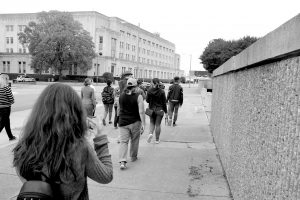
Ultimately, students spent a great deal of time researching, interviewing, writing, and editing to pull this tour together. The tour itself lasted for three hours — a testament both to the wealth of information amassed by students and to Norfolk’s rich, interesting LGBTQ history. Every fall since 2017 ODU Queer Studies students have created a queer walking tour. Each tour is unique, with different stops and varying themes. The 2020 tour was delivered via Zoom due to the coronavirus pandemic. Though we were unable to meet face to face, this change in format allowed students to expand the tour to cover locations in Virginia Beach, Hampton, and Newport News.
Dozens of undergraduate students have now had the unique opportunity to conduct archival research for these tours and to contribute to preserving queer history in the Tidewater region. That research is often difficult and frustrating, but it is vitally important, and it has created exciting opportunities for intergenerational connections between students and members of the local community. This website serves to document this work, preserve it, and present it to the community.
